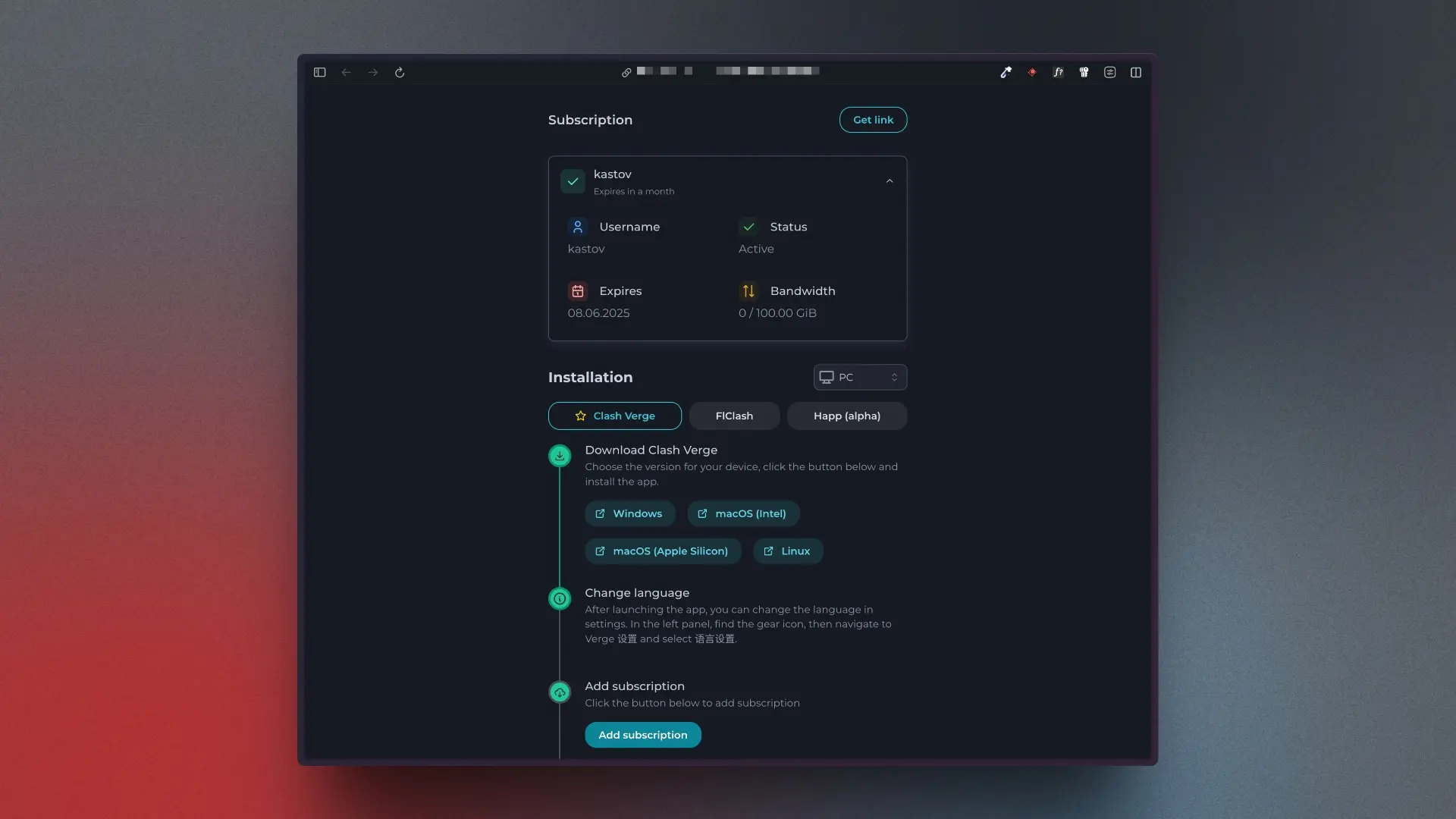Subscription Page
Remnawave Subscription Page is lightweight and secure way to hide your Remnawave Panel domain from end users. You can use it as a simple and beautiful subscription page for your users.

You can install subscription page on the same server as Remnawave Panel or on a different server. Select the appropriate guide below.
📄️ Bundled
Bundled installation means that you will install subscription page on the same server as Remnawave Panel.
📄️ Separate server
Separate server installation means that you will install subscription page on a different server from Remnawave Panel.
After you install subscription page, you can customize it by following the guide below.
📄️ Customization
Customization guide